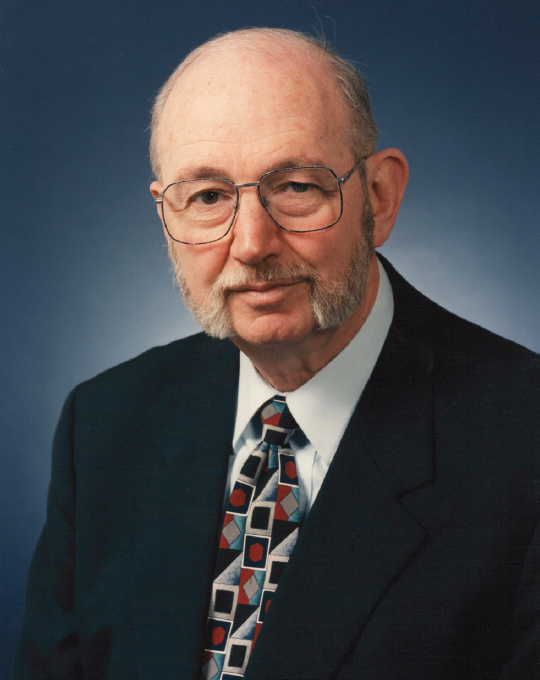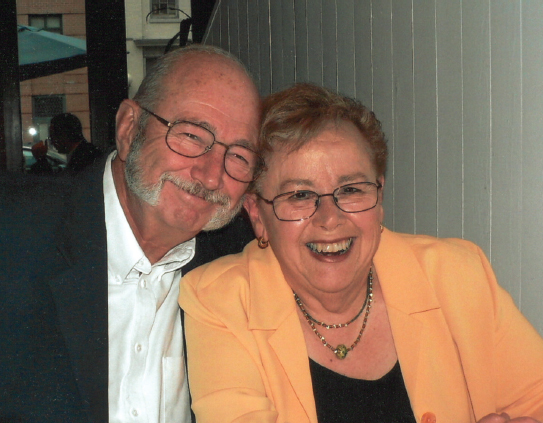SHELDON M. WIEDERHORN
1933–2021
Elected in 1991
“For outstanding advancements in the development and application of test methods and basic understanding of the mechanical properties of ceramics.”
BY BRIAN R. LAWN
SHELDON MARTIN WIEDERHORN passed away June 4, 2021. He was 88 years old, spanning an illustrious career in science.
Shelley was an extraordinary human being, larger than life. Beloved by his colleagues and friends, he had the kind of outgoing personality that was simply impossible to dislike. His huge smile said it all. What set him apart was his rosy attitude toward his fellow man—he saw good in just about everyone, even those who sometimes behaved questionably, and always gave people the benefit of the doubt. He was the consummate gentleman and humanitarian.
He was born May 4, 1933, and proudly raised in the Bronx by his immigrant parents Joseph and Estelle. In the later periods of our friendship he confided some mischievous episodes of his youth, related with a self-satisfied grin. I particularly liked the one where he ran away from a summer camp, refused to climb down from a tree, then wandered onto a farm and helped milk the cows. Like all of us, he must have driven his parents mad at times. But through all that was pure goodness of spirit, the likes of which we find in a select few.
He graduated from the Bronx High School of Science and earned his BS at Columbia University in 1956, and then his MS (1958) and PhD (1960) at the University of Illinois
Urbana-Champaign, all in chemical engineering. His PhD work was conducted under Harry Drickamer (NAE 1979), Nobel Laureate in 1946 for his work on the development of high-pressure apparatus to study phase transformations in solids.
After a brief spell as a research engineer at E.I. du Pont de Nemours and Company in the early 1960s, Shelley took a permanent appointment in 1963 at the National Bureau of Standards (NBS; in 1988 it became the National Institute of Standards and Technology, NIST) under the direction of Jack Wachtman (NAE 1976). This was a bold move, as NBS in those days was stationed in downtown Washington in somewhat antiquated labs. Shelley’s wife Nancy famously asked him, “You gave up DuPont for this?” But NBS soon moved to a new and expansive campus in Gaithersburg, Maryland, where Shelley’s work flourished.
I first met Shelley in the early 1970s, when we were both trying to understand how the presence of water accounted for the fatigue and failure of brittle materials. His pioneering work illustrated the complexity of subcritical crack growth in glass due to chemical reactions between water and stressed bonds (stress corrosion cracking). The work was published in a 1970 paper that is considered one of the most important in the field. 1 It earned more than 1000 citations during his lifetime and arguably kick-started a revolution in ceramic research.
Science began to enter the world of brittle materials in explosive fashion, highlighted by a series of exciting Gordon Conferences in the 1970s and 80s. Shelley, along with Arthur Heuer (NAE 1990) and Anthony Evans (NAE 1997), was at the forefront of the new age. At NIST he established a laboratory dealing with fracture and deformation, starting with electron microscopists Bernard Hockey and Nancy Tighe and expanding into a world-class group. His work helped put NIST on the map in materials science. He was duly awarded the institute’s Silver (1969) and Gold Medals (1982) for his scientific
___________________
1 Wiederhorn SM, Bolz LH. 1970. Stress corrosion and static fatigue of glass. Jounal of the American Ceramics Society 52(10):543–48.
achievements. He was also designated a NIST fellow in 1988. He spent brief periods in managerial roles, but disliked those, freely acknowledging that he had no administrative bones in his body. Instead he focused on his research, which now forms his proud legacy.
Beyond NIST, he was active in the community. He was a fellow and then a distinguished life member of the American Ceramic Society (ACerS) and editor of its journal for 15 years. He served on a number of committees of the National Academies, beginning in 1977 with his appointment to the Committee on Army Basic Scientific Research (1977–83). Over the next decades, he was also a member of, among others, the Condensed Matter and Materials Research Committee (1992–95), Panels for Review of Air Force Office of Scientific Research (AFOSR) Materials Research Proposals (1994–96, 1996–97, 1998), Committee on Materials Technologies for Process Industries (1999–2001), and Committee on Testing of Body Armor Materials for Use by the US Army (2009–12). After his election to the NAE in 1991, he volunteered his service for the Materials Engineering Section and its peer and executive committees (1999–2003) as well as the Committee on Membership (2001–02, 2004–06).
Shelley was the recipient of many honors. In 1977 he won the NBS Samuel Wesley Stratton Award. He received just about all the awards that ACerS has to offer, including the Ross Coffin Purdy Award (1971) and the John Jeppson Award (1994) for outstanding research on ceramic materials. He spent sabbatical periods at the Max Planck Institute in Germany. In 2016 Columbia University presented him with the Thomas Egleston Medal, its highest honor for alumni, citing him as “an authority on the mechanics of stress and fracture whose work has contributed to shatterproof glass used on so many products, from the windows of spacecraft to smartphone screens, and ceramics used in a variety of electronics.”
Testament as to how high Shelley was held in esteem is the outpouring of tributes from a vast number of national and international colleagues. My email box was inundated with expressions of loss and sadness. He was truly a man of the world.
When Shelley married Nancy Wanderman, many saw a perfect match. They united while at Columbia and shared interests in travel, museums, theatre, and literature. Nancy was his muse. Shelley also enjoyed swimming, ice cream, and being a handyman for family and friends, fixing dishwashers, cribs, and other items on demand. He was a devoted family man and talked proudly about his children and grandchildren.
Shelley was preceded in death by his beloved Nancy (2016). He is survived by son Jonathan (Elizabeth) and daughter Miriam Rust (Harry), and two grandchildren.
Shelley Wiederhorn. A pioneering scientist and a beautiful man.








